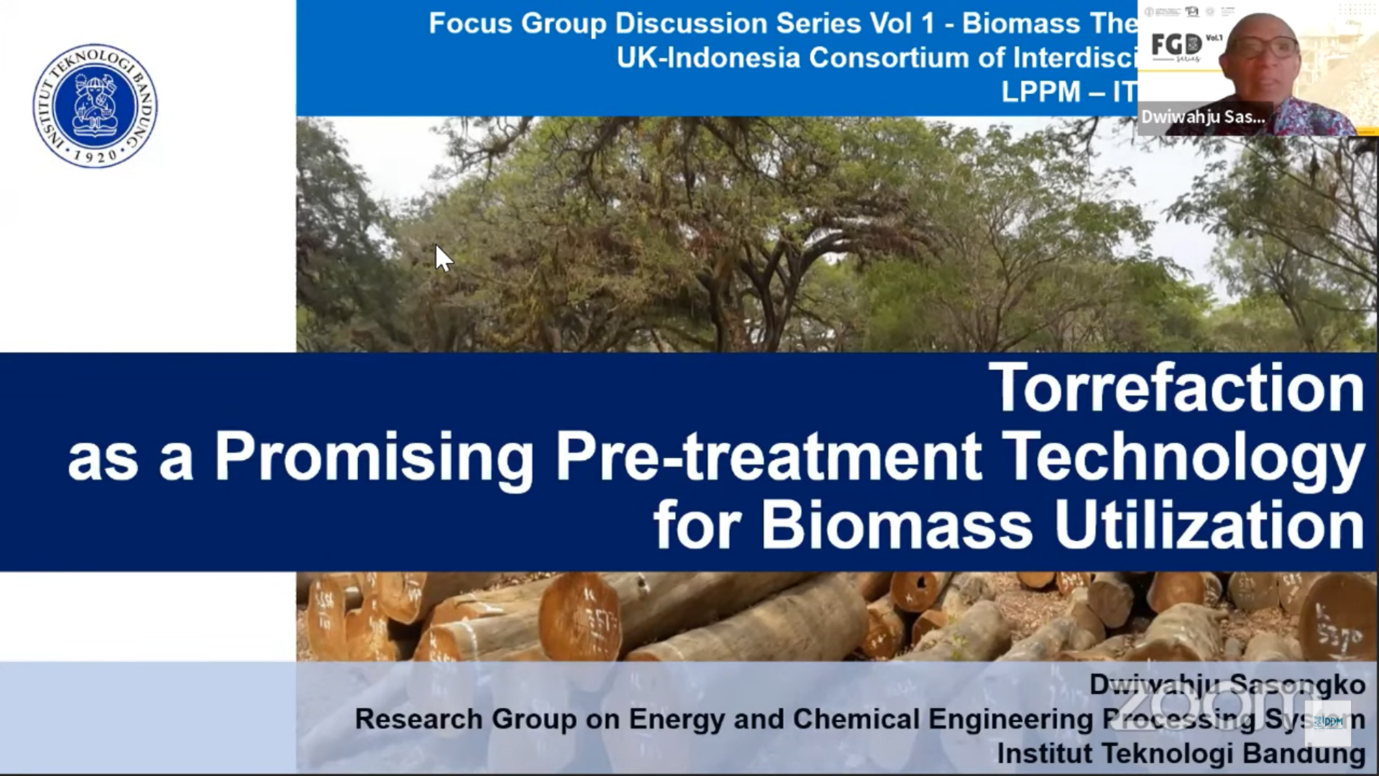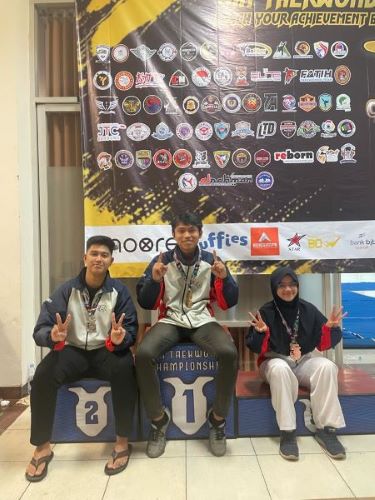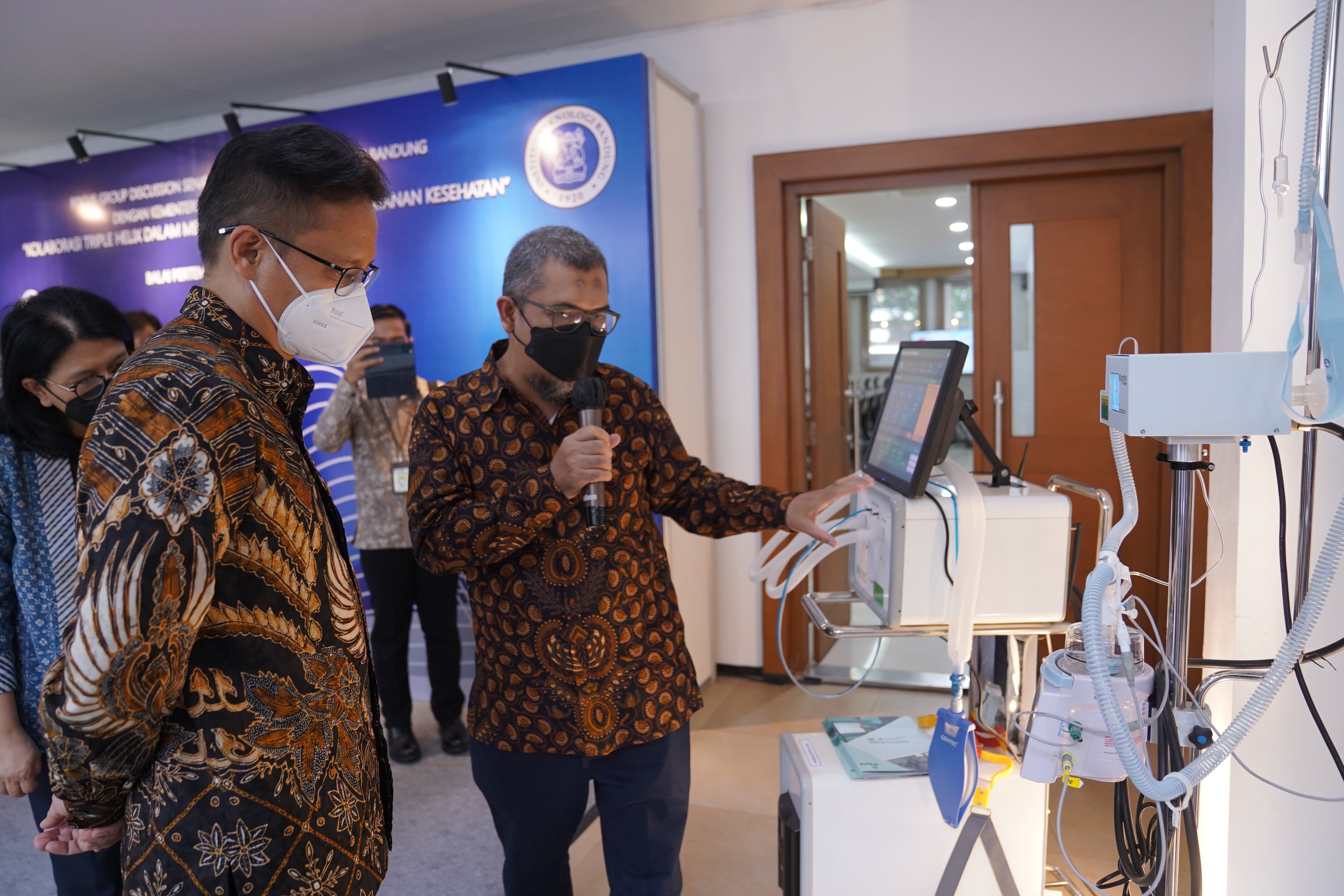Energy Utilization Opportunities from Biomasses According to ITB Chemical Engineering Expert
By Adi Permana
Editor Adi Permana

BANDUNG, itb.ac.id – Renewable energy sources only accounted for 5% of the world's energy consumption. It was conveyed by Prof. Ir. Dwiwahju Sasongko, M.Sc., Ph.D., an Institut Teknologi Bandung (ITB) Chemical Engineering Professor, in LPPM ITB FGD Series Vol. 1: Biomass Thermal Conversion on Wednesday (28/4/2021).
On the occasion, he delivered his speech on torrefaction as a promising technology for the utilization of renewable energy. He starts by presenting various most widely used energy sources in the world.
In 2019 Indonesia ranked as the world's 14th largest renewable energy producer. "The government aimed that the share of renewable energy in Indonesia by 2050 would reach 31% of all energy consumption," he said.
Prof. Sasongko then proceeded to explain biomasses and torrefaction. According to him, the kind of biomass that is used in Indonesia is waste biomass. "To generate energy, we do not cut down a fresh plant, instead we will use the residue of the agriculture industry", he further explained. The source of Indonesia's biomasses potential is an agricultural product such as rice, corn, cassava, rubber, sugarcane, and coconut.
Torrefaction is a thermochemical process which is done in vacuum condition at a temperature of 200-300°C. This process is intended to convert biomasses into solid fuel that has higher energy density compared to the unconverted biomasses.
The implementation of the torrefaction method on biomasses resulted in better fuel characteristics, such as lower moistness, lower organic degradation, and higher homogeneity. Another benefit of the torrefaction method is less organic residue, cheaper than petroleum, reduced dependence on petroleum, and added income for the agriculture industry.
Later at the FGD, a Professor from Universitas Gadjah Mada (UGM) Chemical Engineering, Prof. Dr. Eng. Ir. Arief Budiman, M.S., delivered an explanation on the potential development of biomass conversion into bio-compressed methane gases. "Biomasses from waste and residue in Indonesia have a lot of potentials to generate energy," he said. According to him, forestry industries have been the main sources of that waste and residue.
One of the thermochemical processes that is discussed is gasification. Gasification is a process of converting the solid-state fuel thermochemically into the gas state, in which the air requirement for the combustion process is much lower. “In this gasification process, what we observe is how syngas turned to methane,” he explained.
Methane gasses from biomasses can be extracted by the thermochemical and biochemical processes. The difference between the two is that the thermochemical process uses a higher temperature and pressure than the biochemical process. Another difference is that the biochemical process requires microorganisms and enzyme catalysts, while the thermochemical process only requires a metal catalyst.
There are 4 main processes in gasification: drying, pyrolysis, combustion, and reduction. Moreover, there are 3 main types of gasifiers: moving-bed, fluidized-bed, and entrained-flow gasifier.
Furthermore, there is the Sabatier process, which is a thermal-chemical process that synthesizes methane by reacting carbon dioxide and hydrogen into methane at a temperature of 250-300°C with the help of a catalyst.
As a conclusion, Prof. Budiman stated that there are 146 million ton of biomass that can be converted to energy each year. Moreover, Bio-methane can be used as a replacement for LPG in the form of Bio-CMG and can also be used as a substitute for premium fuel.
Reporter: Adi Permana and Yoel Enrico Meiliano (TPB FTI, 2020)
Translator: Favian Aldilla (Civil Engineering, 2019)

.jpg)

.jpg)
.jpg)
.jpg)



